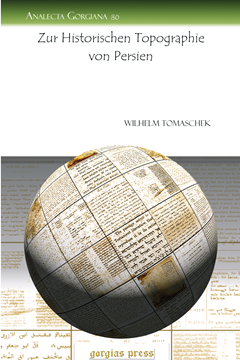Wilhelm Tomaschek
Zur Historischen Topographie von Kleinasien im Mittlelalter
Series: Analecta Gorgiana 81
ISBN: 978-1-59333-856-5
This study considers the topography of Asia Minor during a period of intense historical interest, the era spanning the Crusades. Useful for historians of the Middle Ages and especially those interested in the events surrounding the use of Asia Minor as a bridge to the distant lands of the Holy Land, this brief examination will retain its value. Presenting Turkey as it was seen during the Ottoman period, this topographical history will also appeal to historians of the final days of the empire.
$55.00 (USD) $33.00 (USD)
Zur Historischen Topographie von Persien
Series: Analecta Gorgiana 80
ISBN: 978-1-59333-855-8
Originally a two-part publication, geographer Wilhelm Tomaschek’s study on the historic topography of Persia is here published in one volume. Beginning with the street layout of the Tabula Peutingerana, the author describes the major routes of the Persian realm as reflected in antiquity. Although reflecting the period of the Qajar Dynasty prior to the developments during the World Wars, this guide still provides historic information concerning the mapping of one of the great empires of the ancient world.
$73.00 (USD) $43.80 (USD)
Die Alten Thraker Ein ethnologische Untersuchung
ISBN: 978-1-59333-941-8
Tomaschek’s seminal study on the Thracians has become a volume difficult to locate. This edition is the rarer first volume of his explorations of the ethnology of this poorly understood culture. Examining the tribes within the Thracian region, Tomaschek also looks at the traits of the Thracians in general. Consideration of the language is also given, including the names of gods and cultic terms. Personal names, regional and ethnic names, and the terms for mountains, hills, rivers, and seas are also part of the lexical study. Written in German, this historic study is now once again readily accessible to scholars.
$158.00 (USD) $94.80 (USD)



